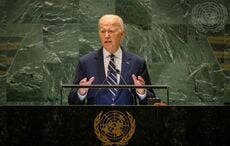P.J. (Patrick Joshua) Conlon, a left-handed pitcher in the New York Mets minor league system, is pretty unique—he is an Irish-born professional baseball player.
In the nearly 150-history of major league baseball there are—depending on the source—fewer than 50 Irish-born players who have reached the majors (they make up a little more than 0% of the over 17,000 players who have worn a major league uniform). Most played in the late 19th and early 20th century. Most of them were born right after the great famine and immigrated to America. Almost all of these Irish were journeymen players who would never get close to the Hall of Fame. (There are, however, second generation American Irish such as John J. McGraw and Connie Mack—born Cornelius McGillicuddy—who gained the honor.)
There is one player who, like Conlon, was born in Belfast. Henry Cooke “Irish” McIlveen was born there in 1880 and immigrated with his family to the Pittsburgh area when he was a lad. He did not make his major league debut until 1906 when he appeared in the hometown Pirates’ lineup. In 1908-09 he played for the New York Highlanders (now the Yankees). He ended his career in 1909 with a lifetime .215 batting average, no home runs and only 8 RBIs. Although McIlveen’s record is modest, Conlon’s aim is to match his achievement of reaching the major leagues.
IrishCentral caught up with Conlon in Columbia, SC where he is playing for the Columbia Fireflies, the Class A farm team of the New York Mets in the Sally League. When asked how he got from Belfast to America Conlon said, “My dad is from Ireland and my mom is from Scotland. They met in California, married, then went back to Belfast where I was born. We came back to Orange County when I was 2-years-old.”
Conlon never heard of Irish McIlveen and is pretty sure he is the only Irish-born player active today. His memories of Belfast come from a visit he made when he was a teenager. “When I was 16 I went to visit my cousins for three weeks. It was a lot of fun and a cool stay.”
Drafted by the Mets in 2015 in the 13th round of the major league draft, Conlon knew he was on the Mets' radar going into the draft. “The Mets were the frontrunner. I would have been more surprised if another team took me.” Conlon throws both a two- and four-seam fastball, change-up, curve and slider. The change is his “out” pitch and admits it’s “come a long way” in the time he has been a professional.
Lefthanded pitchers—“southpaws” in the baseball vernacular—are highly valued in baseball because they are rare. Fewer than 40% of MLB pitchers are lefties. If healthy, a lefthanded pitcher can last into his 40s and be a money-making machine—something Conlon is very aware of: “A lot of people don’t like hitting against lefties. I feel my arm is in good shape to throw multiple days.”
Conlon has come out of the gate blazing in 2016. He owns a 7-0 record, a 1.04 ERA and an outstanding 36/6 strikeout to walk ratio. “I’m a bit more of a control pitcher,” he says, “not a hard thrower. I had to put the ball where I wanted to. I would credit that to my college pitching coach. At San Diego, I learned my change-up. My command. It was because of going to college that I got that kind of command.”
It would appear that he’s headed for an imminent promotion up the ladder to the St. Lucie Mets of the Florida State League. “I can’t really think about that kind of stuff,” he wisely says. “I’m just trying to do my job. I try to take the mound every six days. Whatever else happens, happens.”
He knows how valuable his left arm can be and is already looking to the future, pitching either as a starter or reliever. “I can see myself doing either. I have the stuff and longevity to be a starter. I got a taste of pitching out of the bullpen in Brooklyn last year. I don’t have a preference of the two. My ultimate goal is to pitch in the major leagues.”
There was another Irishman who had a great career with the New York Mets, one Frank “Tug” McGraw, the late, beloved, and outstanding relief pitcher for the Mets' 1969 and 1973 championship teams. McGraw is also famous for his war-cry for that ’73 team: “Ya Gotta Believe!” When asked if he knew who McGraw was, Conlon replied: “Isn‘t that Tim McGraw’s father?”—he gave the correct answer, citing Tug’s famous son, singer Tim. When told one of Tug’s great lines—once asked which he liked best, grass or AstroTurf, Tug replied “I never smoked AstroTurf”—which elicited a chuckle out of Conlon.
In 2015 Conlon got a taste of New York when he pitched for the Brooklyn Cyclones of the New York-Penn League. What did he think of the Big Apple? “I was surprised how many Irish people were there. It was a really cool thing. There were a lot of things going on all the time.”
When asked what was the biggest adjustment in becoming a professional baseball player, Conlon cited the fatigue factor: “The amount of games in a short amount of time. We’re on a 31 game stretch when we play every day. Being at the ballpark for so long every day.”
When asked if he had a favorite player growing up, or a pitcher he modeled himself on, he did not hesitate: “Randy Johnson. He was the first baseball player I liked and he’s been my favorite player ever since, although he’s not playing anymore. I can’t model myself after him because we’re different type of pitchers. Johan Santana also. Because of Santana I called the Mets my National League team when growing up. At 10 or 12 I got a customized jersey with Conlon 57—Santana’s number—on the back.”
The Mets are known as an organization for producing great pitchers from Seaver, to Gooden, to the group in New York now, the Syndergaards, Harveys, deGroms. Does Conlon think this is an advantage to a young pitcher like himself? “A definite advantage,” he says. “We have a great throwing program which we stick to. It’s the best, a set routine. It’s definitely beneficial to us and I enjoy it.”
After getting a taste of Mets fans in Brooklyn last year he’s looking to New York: “Since I got drafted by the Mets, the fans have reached out. It’s a really cool thing to say I was born in Ireland and have the fans react to that.”
P.J. Conlon is on his way. If he is successful he should emulate his fellow Belfast native Irish McIlveen and in about three years find himself in New York, the latest Irish-born player in a tiny, unique clique.
---
Dermot McEvoy is the author of the "The 13th Apostle: A Novel of a Dublin Family, Michael Collins, and the Irish Uprising and Irish Miscellany" (Skyhorse Publishing). He may be reached at [email protected]. Follow him at www.dermotmcevoy.com. Follow The 13th Apostle on Facebook.




Comments